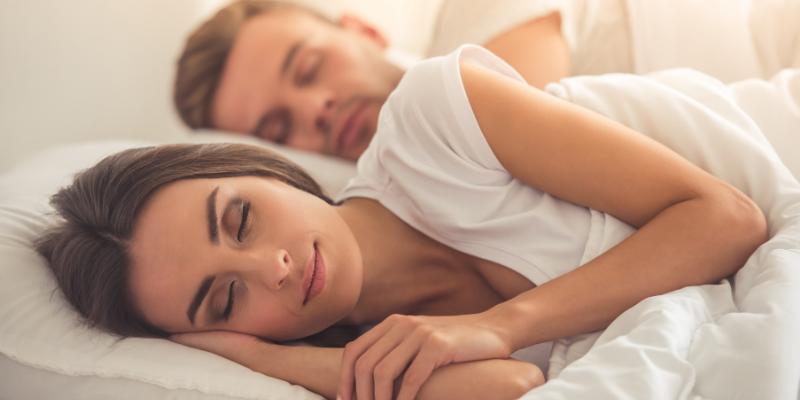White Noise: How to Use It for Better Sleep
Posted On: April 8, 2021 by CarePro Health Services in: CPAP Sleep Sleep Apnea White Noise

If you’re a CPAP user, then you’re no stranger to troubled sleep. Oftentimes, noises such as loud neighbors or a whirring CPAP machine can distract us and make it difficult for us to fall asleep. The gentle hum of white noise could be the solution. Many people enjoy drifting off to sleep with various frequencies of white noise playing in the background. But what is white noise? And how can it help you fall asleep? Read on to find out.
White Noise: What Is It?
You may be familiar with that snowy static that you’ve seen on a television screen before and that sound is called white noise. White noise is the noise produced by combining all the frequencies of sound at once. Each frequency is projected at an equal intensity from low to high. This creates the steady humming noise that you’re familiar with.
How Can It Help You Sleep Better?
White noise masks background noises that can stimulate your brain and disrupt your sleep, such as barking dogs and loud traffic. This steady humming sound relaxes your brain, helps you sleep undisturbed and can be quite soothing for those who struggle with falling asleep, have insomnia or other sleeping disorders.
How Can I Use White Noise?
There are many ways to use white noise, from free and paid apps to various white noise machines. Which you used is based on your preferences and what solution is most convenient to you. If you’re in the market for a dedicated white noise machine, some factors to take into account are your price range, the size of the machine you’re looking for, and whether it includes features such as a sleep timer that shuts the device off after a certain amount of time and an alarm to help you wake up at a set time. If you’d prefer not to purchase a machine, explore your phone’s app store for options.
What are the Differences Between White Noise, Pink Noise and Brown Noise?
The noises below are named in a similar way as the colors of light. For example, white noise contains all audible frequencies just like white light contains all the frequencies in the visible range. Here we’ll go over the three common types:
- White Noise: White noise, as we discussed earlier, includes all audible frequencies and the energy is equally distributed across these frequencies. This humming noise is like a whirring fan, radio/TV static and air conditioner.
- Pink Noise: Pink noise is very similar to white noise, but is a little deeper and can be more pleasing to listen to. This noise sounds flat or even to the human ear. It’s also used to mask background noise and occurs naturally in sounds like heartbeat rhythms, steady rain and rustling leaves.
- Brown Noise: Brown noise has higher energy at lower frequencies which makes it deeper than pink and white noise. Some consider brown noise the most soothing out of the three. Examples of brown noise include low roaring, strong waterfalls and thunder. Brown noise may help you focus better on tasks.
We’re Here to Help
If your sleep troubles are linked to your CPAP therapy, CarePro is here to help! We carry a wide selection of CPAP equipment and supplies and our respiratory therapists can help find the right equipment for your unique needs that will help you get the best out of your sleep therapy. Contact us today for help or visit our website for more information.

0 comments